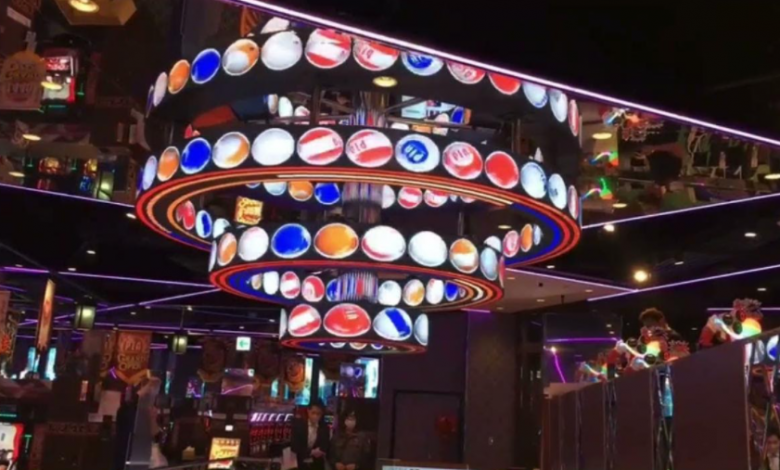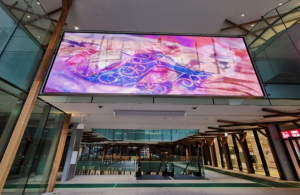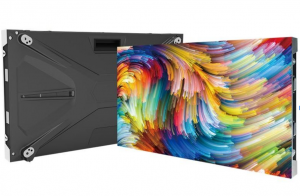
It’s been roughly 50 years since the invention of the first liquid crystal display (LCD) screen. As technology has progressed over that time, so have display screens. Many people have switched from regular LCD screens to LED screens, and they haven’t looked back since. On the other hand, an LED display screen is a popular product in the digital signage industry and is widely used in various advertising applications.
When you’re shopping for an LED display screen, you want to be sure you’re buying a high-quality model. The screen should be bright and clear, and it should have the features you need. There is no doubt that many features will affect the LED display screen, including the display’s refresh rate and frame rate. So, kindly check the refresh rate and the frame rate firstly.
1. Refresh Rate
LED refresh rate is the number of times per second that the display repeats the display screen and is usually expressed in Hertz (Hz) units. Refresh rate is an important indicator to characterize the stability of the LED display screen without flickering. For instance, if an LED screen has 1920 Hz, it means an image will be refreshed almost 1920 times per second.
2. Frame Rate
The Frame rate of an LED is measured in frames per second (fps), indicating how smoothly a video will play. Due to the visual retention effect of the human eye, when the frame change frequency reaches a certain level, the discrete switched frames appear to be continuous. The frame rate is an important indicator to characterize the continuity of video.
The faster the frame rate, the smoother an image will look on an LED video wall when you’re watching action-packed movies with lots of fast-moving images. It’s not just for movies: A fast frame rate is essential for professional graphics work, where the smooth movement of text and images is essential.

Difference between the Refresh and Frame Rate
Both the LED refresh rate and the screen frame rate affect the image quality of an LED display screen. It is important to note that, as an inherent electronic property of the hardware, the refresh rate is a parameter indicator of the LED display device, while the frame rate often depends on the quality of the video source, animation source, and signal source.
The higher the refresh rate, the lower the flicker and the higher the image clarity; the lower the refresh rate, the more likely the flicker will appear. At the same time, the higher the frame change frequency, the better the picture continuity; the lower the frame change frequency, the more likely the picture will flicker.
When the LED display screen shows tearing and dislocation, it is because the LED refresh rate is generally unable to keep up with the frame rate of the signal source. These static images are overlapped or misaligned, causing the image of LED display screen to break or tear and generally require vertical synchronization to resolve.
Benefits of Using an Led Display Screen With a High Refresh Rate
There are so many benefits of having an LED screen with high refresh rates, for instance:
Minimal motion blur
Sharp and crystal clear image without flickering
Reduced eye strain
Immersive image quality
Fluid on-screen movement with a more realistic image
Significantly reduce the scanning ripples of the picture in other photographic sampling equipment
What Affects the Refresh Rate?
Refresh rate is one of the LED screens’ most obvious performance indicators, but some significant factors can affect the refresh rate.
- IC driver. It is the most decisive component for the refresh rate of the LED display screen. IC drivers are used in LED display screens to receive internal production time PWM protocols to display data. It requires a LED display screen IC driver with high consistency of inter-channel current, high-speed communication interface rate and constant response speed.
- The load point of the receiver card. It determines whether the refresh rate can be turned up or not.
- The scan rate of the display. The scan rate determines whether the refresh rate of the screen can be adjusted.
The above factors are all mutually constrained, and there is no single factor that can directly determine the refresh rate. Since these parameters can be adjusted according to demand, if the original high refresh rate capability is not enough to force the screen to adjust higher, there will be a reduction in brightness, grayscale, flicker screen and other problems.
Is the Refresh Rate Higher, the Better?
Some people think that higher refresh rates mean better picture quality. It is not true. It can be said, the higher the refresh rate, the higher requirement on the quality of an LED display screen. It will be easily damaged if the LED display screen is not good enough to accept the high refresh rate. So it is not wise to adjust the refresh rate too high. Therefore, it is generally recommended to set the refresh rate at 1920Hz to 3840Hz, which not only meets people’s visual requirements but also ensures the service life of the LED display screen. However, the LED display screen with 3840Hz meets ordinary needs.

LED Display Screens Offered by SHISAI
The SHISAI offers a high-quality LED display screen with an exceptional response time of 1920Hz-3480Hz, enough to catch the eye of customers. Their display screen uses a small matrix of combined pixels to form an image. This type of screen is the most commonly used among digital signage because it offers bright images with great contrast and clarity!
Why Choose the High-Quality LED Display Screen from SHISAI?
SHISAI, as one of the leading LED display and media solution manufacturers in China, commits to developing and producing the best quality LED display screen. SHISAI’s products are widely popular worldwide among customers for their elegant appearance, impressive quality, and perfect after-sales service. So, if you are looking for a LED screen for your business, check out their website. You won’t regret it at all.




